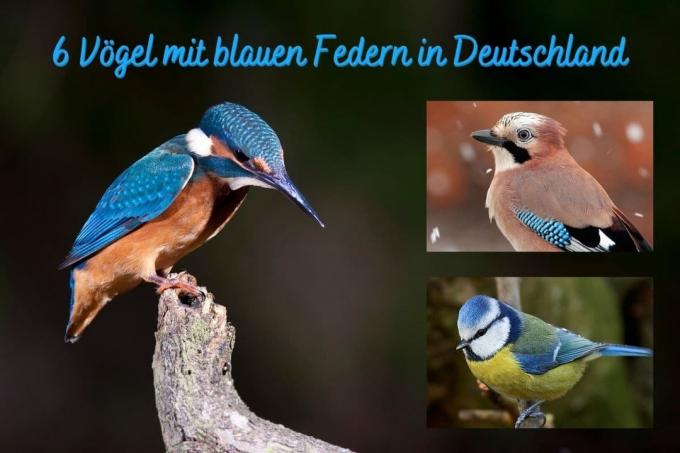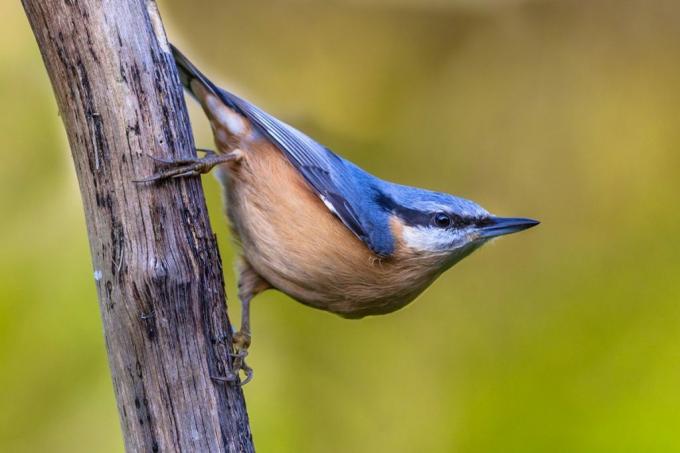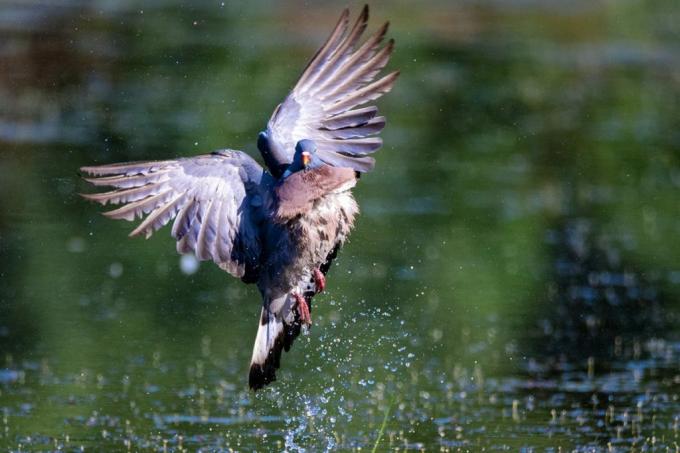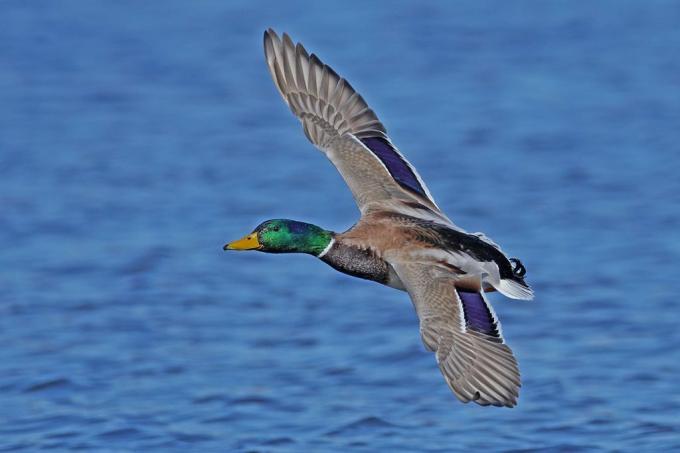
table of contents
- Blue tit (Cyanistes caeruleus)
- Eurasian Jay (Garrulus glandarius)
- Kingfisher (Alcedo atthis)
- Nuthatch (Sitta europaea)
- Wood pigeon (Columba palumbus)
- Mallard (Anas platyrhynchos)
- frequently asked Questions
In Germany there are a small handful of birds that are adorned with blue feathers. This guide will introduce you to the native species with shades of blue in their plumage.
In a nutshell
- 6 bird species with blue plumage are native to Germany
- they are common
- mostly not completely blue
Blue tit (Cyanistes caeruleus)

- Feathers on crown, wing tips and tail colored blue
- Wings change from green to blue
- Completely yellow underside, white face with black eye and chin stripes
- light weight of about 10 g
- Size of about 12 cm
- Standing birds all over Germany
- Habitat includes deciduous or mixed forests, as well as forest edges, open cultural landscapes and, less often, urban areas
- recognizable by the trilling tii-tii
Tip: Blue tits you can often see them hanging upside down on trees, poles or other climbing opportunities due to their low weight. The little birds are very agile.
Eurasian Jay (Garrulus glandarius)

- Wing fields are colored intensely blue
- pink to reddish brown basic color, wings and forehead with characteristic black and white markings
- with black beard stripes
- becomes about 35 cm tall
- Partial puller who can be found all over Germany
- prefers light forests as living space, not infrequently found in gardens and urban areas
- shouts with a clearly recognizable squawk-out sound
- often imitates hawks or woodpeckers
Kingfisher (Alcedo atthis)

- is the only species of the genus Alcedo in Central Europe
- Upper side completely colored cobalt to azure blue, light areas recognizable
- Underside orange to russet, throat and neck with white spot
- 17 to 20 cm tall
- occurs as a resident bird all over Germany
- slow rivers, brooks and quarry ponds with a large abundance of fish are inhabited
- mainly hunts fish that are caught with the powerful beak
- calls out in a distinctive ziii
Note: The kingfisher is more often confused with the blue elk (Monticola solitarius) or blue magpie (Cyanopica cyana), although these are not native to Germany. You sometimes get lost in the south and especially in the Alps.
Nuthatch (Sitta europaea)

- complete upper side colored blue-gray, pronounced black eye stripe
- The underside is bright orange
- male specimens with red-brown flanks
- 12 to 15 cm tall with a compact build
- about 10% of the worldwide nuthatch population can be found in Germany
- it is a resident bird that is extremely faithful to its location
- open forest areas, gardens, city parks and other urban areas are inhabited
- opens nuts by pinching them and working with his beak
- Reputation varies from the characteristic twett to a plaintive zit or whistling wuih wuih wuih wuih
Wood pigeon (Columba palumbus)

- is considered the largest species among the pigeons (Columbidae) in Germany
- Colored completely gray-blue with a white spot on the neck
- Wings colored white underneath, clearly recognizable light yellow iris
- up to 45 cm tall
- to be found everywhere in Germany all year round
- preferred habitats include urban as well as forest areas and meadows
- always stay in groups
- to be recognized by the cooing
Mallard (Anas platyrhynchos)

- is the most common swimming duck in Germany and Europe
- Feathers of the wings of both sexes partly iridescent blue and clearly recognizable
- Males in gray basic color, green head with white collar, chest brownish, yellow beak and legs in orange
- Females in beige-brown basic color, brown patterned, orange legs, beak in gray-orange
- grow up to 60 cm
- usually found as a couple and with chicks or in large groups
- preferred habitat are all possible bodies of water in Germany, even garden ponds
- breed even in cities
- they are resident birds
- the call is the typical croaking of ducks
frequently asked Questions
Yes, especially the plumage of some exotic bird species is often blue throughout. Among the best known are the hyacinth macaw (Anodorhynchus hyacinthinus), which is colored a deep cobalt blue, and the males of the indigo pink (Passerina cyanea). Budgies (Melopsittacus undulatus) are also often found in this color.
If you want to watch birds like the blue tit or the nuthatch in your garden, you should equip them accordingly. While these birds already have a suitably equipped bird house or feeding station attract with suitable food, you have to do much more effort for the other species operate. Kingfishers, for example, can only be attracted if you have a natural stream with fish available.
Fortunately, none of the native blue plumage species is critically endangered. They're not even endangered, which makes it easy to see them in the wild. Some of the birds, for example the wood pigeon, are even regularly increasing in the population.
